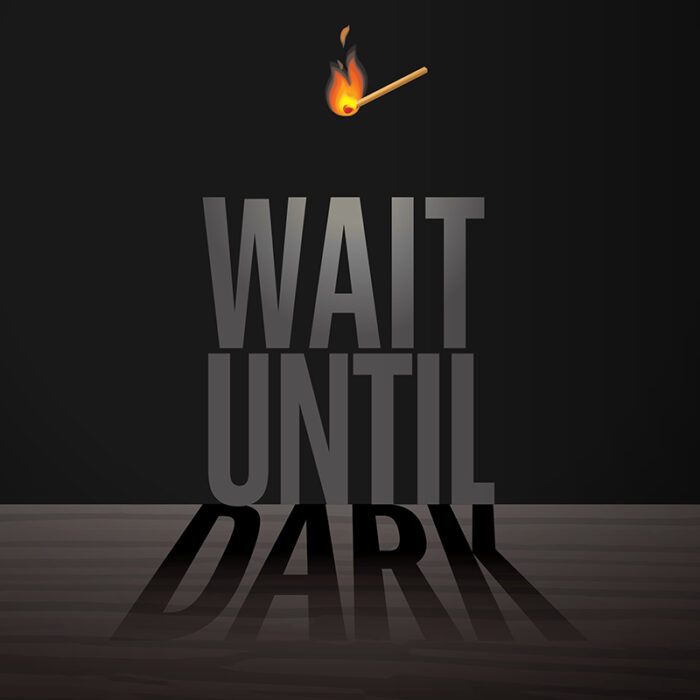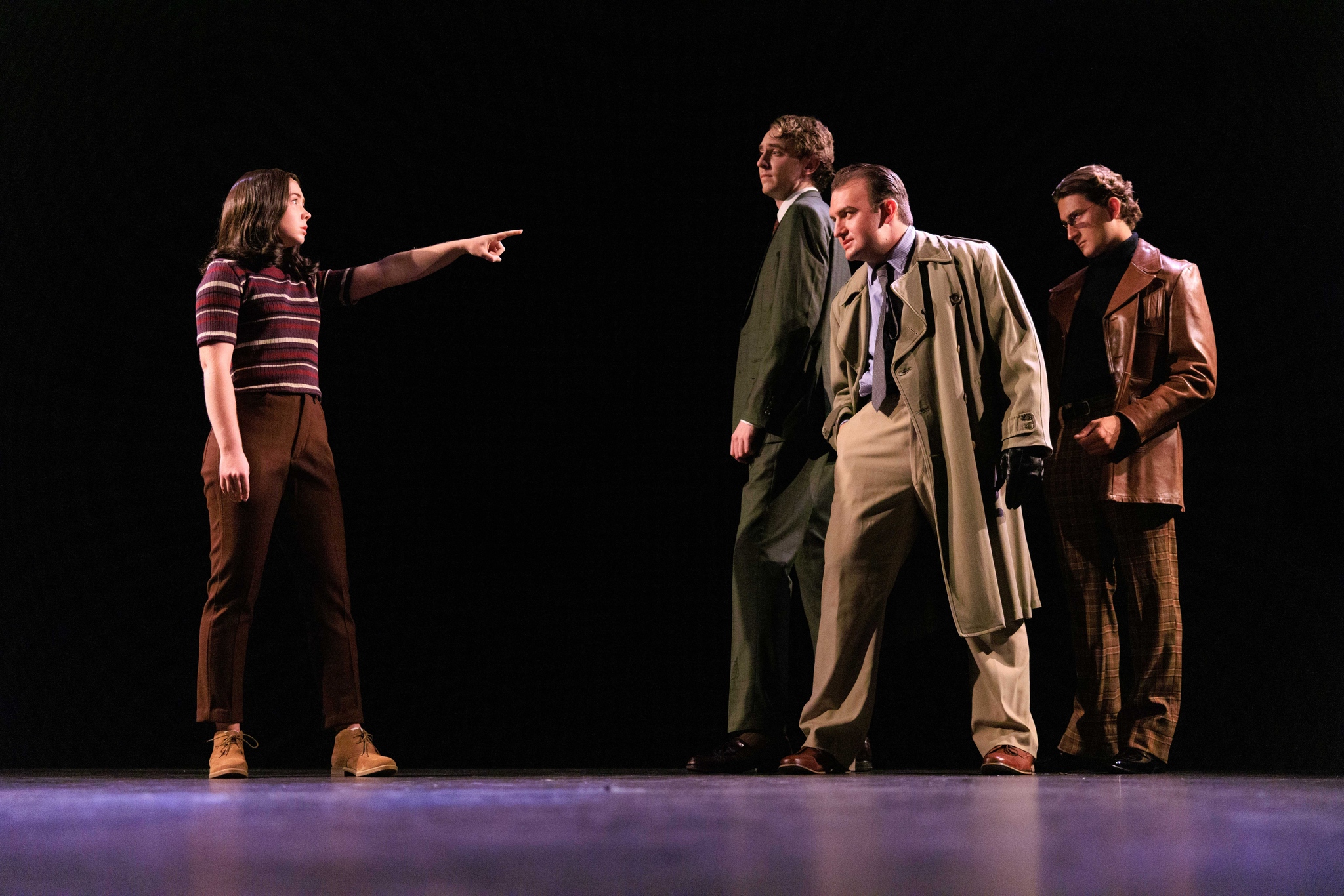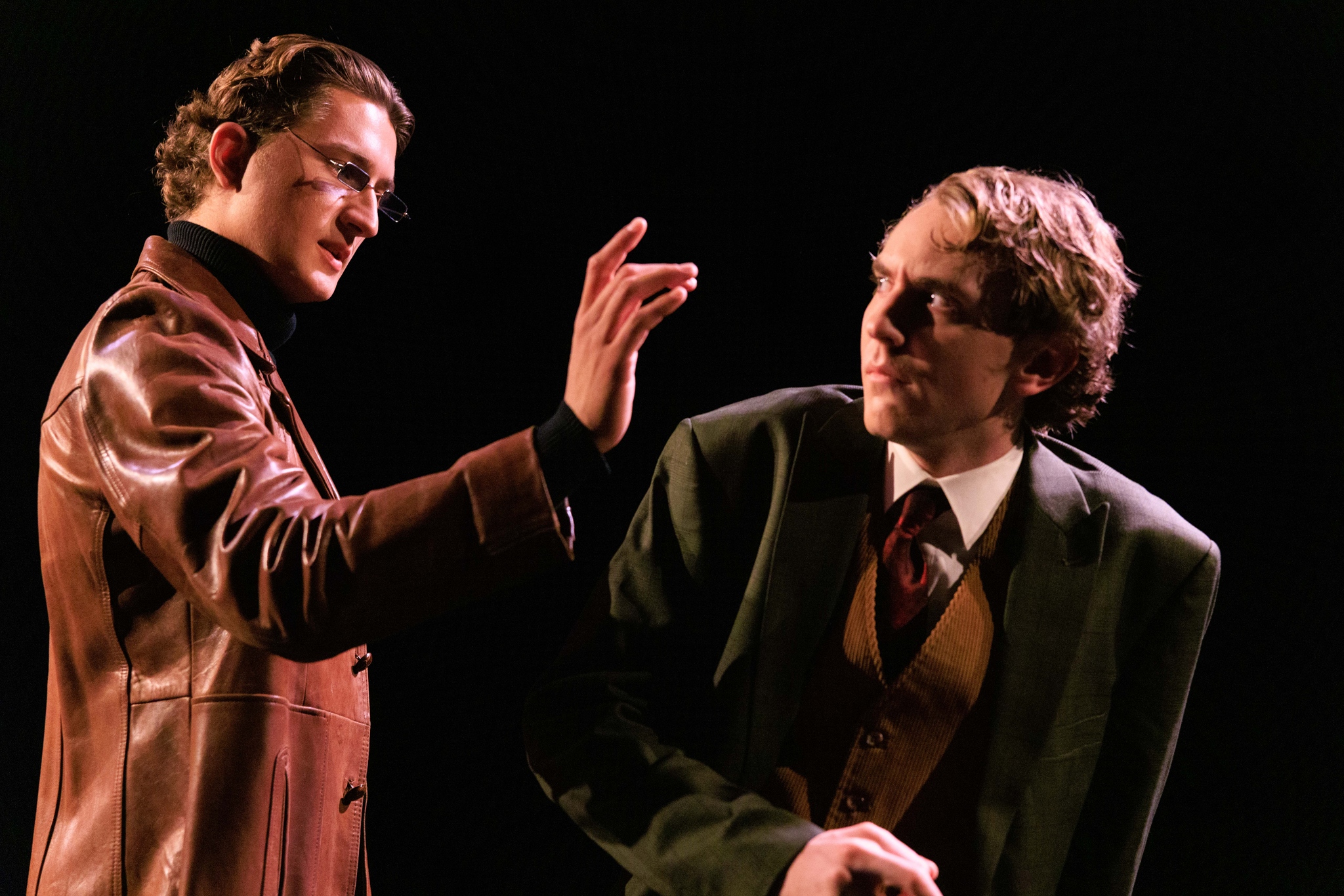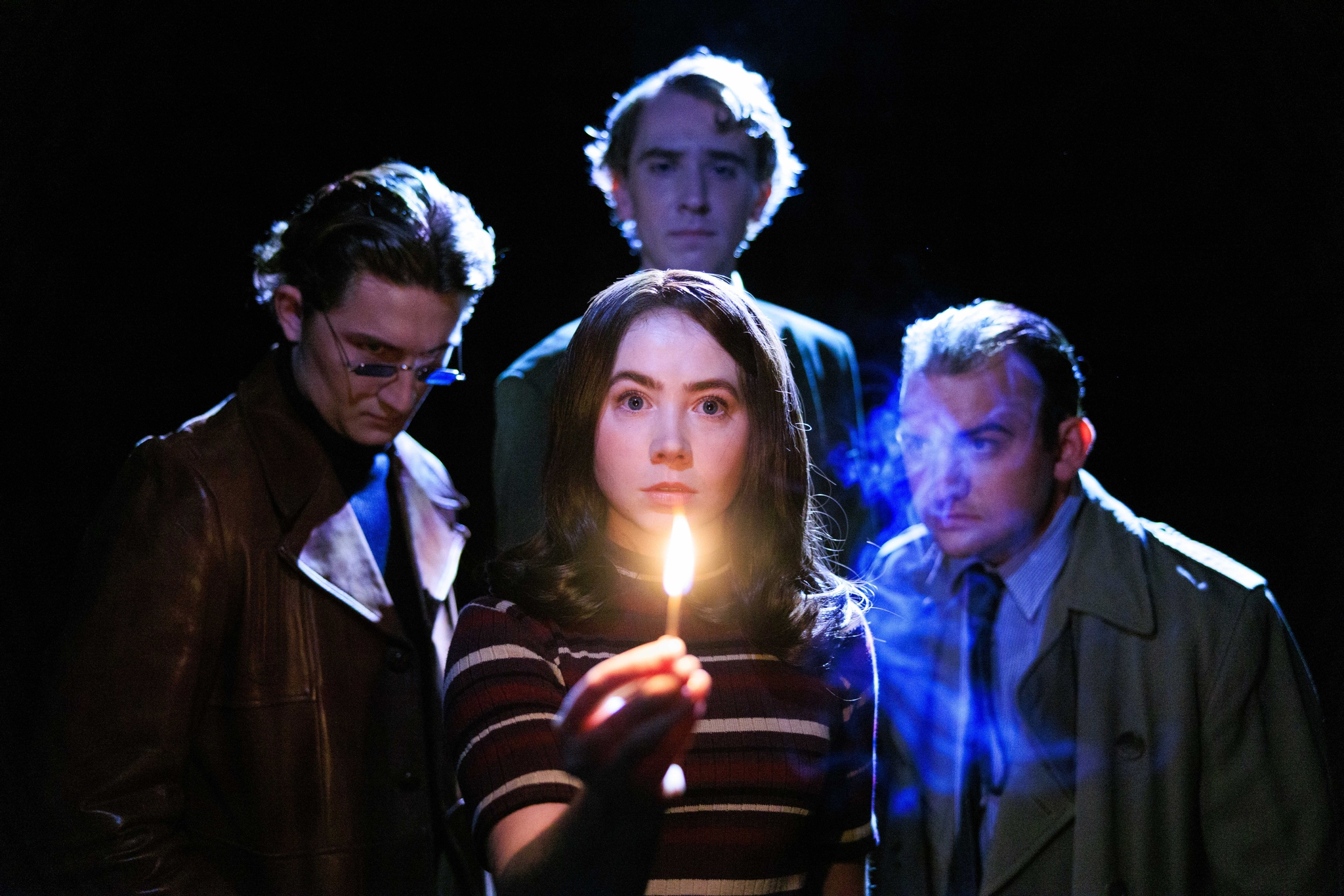PROVO — A chill in the air and thrills on the BYU stage with Wait Until Dark. Written by Frederick Knott and directed by David Morgan, Wait Until Dark is an excellent selection with an appropriate vibe for the Halloween season. The darkness of the play is both literal and figurative, as the play tells the story of conmen seeking to outwit their mark: a blind woman named Susy Hendrix. Written and set in 1966, the conmen Roat, Mike, and Carlino are in search of a doll containing heroin that they believe is in possession of Susy and Sam Hendrix’s home. In manipulating Susy, they learn that Susy can match their con, with the help of neighbor Gloria. The show promises to be a psychological thriller, and it has a gripping finale, but misses the mark during the middle portion of the play.

The central haunting threat in the show is Parley Lambert as Roat, the calculating and wholly villainous conman who entraps Mike and Carlino and seeks the doll. Lambert keenly demonstrates through mannerisms and language how exactly such a villain would evasively use his skills to avoid justice. Roat’s villainy in mercilessly pursuing possession of the doll is clearly shown as Lambert plays several different personalities within the con — and effectively establishes each distinctly. Lambert employed great variety in delivering the dialogue with excellent pacing and even incorporated sly mannerisms toward characters hinting at true intentions. Lambert showed a distinct sly smile at a moment when Susy recognized the sound of footsteps that caught Roat playing two roles in the con. In this, Lambert demonstrates Roat’s intelligence and foreshadows a recognition that Susy is very clever. Unlike the other two conmen, Lambert adds this layer that encapsulates why Roat is so diabolical because of the ability to properly assess victims.
As the accomplice Mike, Daniel Summerstay portrays a sympathetic visitor to the home and acts in the role of ally (though Mike’s intentions are criminal). Summerstay at times felt too sympathetic to Susy’s plight, and this diminished the urgency of Summerstay’s character in finding the doll and therefore the threat of the conman’s presence. This choice relaxed the intensity of the show through the close of the first act, rather than increasing suspense. But the finale shattered expectations dramatically because Summerstay created such a connection with Susy. Summerstay’s performance did enhance a clear contrast from Lambert’s performance as Roat.
While distinct from Lambert and Summerstay’s performances, Hunter Avo as Carlino felt unnecessary to the plot as the policeman who insists Sam is guilty. Carlino is the main threat to Susy’s peace and contrasts the sympathetic Mike during the central portion of the play. But Avo but did not capture that brawny, demanding, intensity of a deceitful policeman pressuring Susy. While the audience is wise to Carlino’s true identity, it is key that Susy believes that Carlino suspects her husband of criminal intent. Avo failed to adequately prove a threat to Susy and thus this intensity and purpose in the first act was lost.

Malin Glade as Susy grew into the confidence and even optimism of the character in the second act. Glade’s Suzy proved a fitting challenger to the conman in catching their deceit. In some ways, this came as a surprise, as Glade quickly became hysterical, almost over-the-top, during an initial conflict with Gloria (played by Devoree Shields) that proves lower stakes in comparison to what comes. This high intensity early on limits the level of intensity and emotion to which Susy can go in response to the larger angers later in the conflict with the conman. What did help was a compelling romantic relationship conveyed between Glade and Curtis Allen, who played Susy’s husband, Sam. Glade’s performance of blindness was persuasive, mainly taking the tactic of tripping over misplaced objects in the room (of which there are many throughout the story). However, due to sightline issues, from my seat it was difficult to see Glade’s facial performance when looking at and speaking to other characters.
The set itself, designed by Cooper Tribett, is faithfully detailed and practical for a 1960s Greenwich Village apartment. The arrangement of the black box stage, with the audience seated directly next to the missing walls of the apartment set creates an effective intimacy. The arrangement increases the thrill of the blacked-out finale. However, the further to the side an audience member sits, the less of the set can be seen. As a general admission with no assigned seating, early arrival is essential to getting a central view of the entire set and action, especially if an attendee is new to the play. Sitting to the side, I missed one plot moment where a conman looked through the window and numerous times the performers were “upstage” of my seating and with their back to my view. This was disappointing, as it limited how much side view audience members could see faces, particularly Glade’s portrayal of blindness.
There are lines and pacing that had issues throughout mainly due to moments that felt exceptionally shouty and overlapping to the point that lines were unintelligible. The first act does have significant expositional weight, but the actors need the patience to not rush their lines. This was best exemplified in Lambert’s performance as Roat, who delivered significant exposition with intentional deliberation creating intensity. During scenes with Gloria and Susy, this issue was particularly apparent and became hard to understand key information. For example, there is a phone call signal that Gloria and Susy establish, and the delivery of the dialogue overlapped so much that the details were missed. This led to a diminished impact a moment later revealing the nature of Mike’s character to Susy.

The second act is tremendous in building suspense, and the performers seemed more at ease with their characters leading up to the finale. The finale itself delivers a thrilling conclusion to the cat-and-mouse game of the production. Wait Until Dark is a terrific thriller, and the production, overall, is faithful to the script and delivers thrilling elements. Newcomers and returning viewers can expect a gripping theatrical finale fit for the Halloween season. The production does advise mindfulness in bringing audience members under 12, as the production includes a full stage blackout and some intense fight choreography. Overall, BYU’s Wait Until Dark starts rough, but in the end delivers a great theatrical experience.
[box]Wait Until Dark plays Tuesdays through Saturdays at 7:30 PM and Saturdays at 2 PM through October 31 (with an additional 10 PM performance on October 31) at the Studio Theatre in the West Campus Building on the campus of Brigham Young University. Tickets are $15-18. For more information, visit arts.byu.edu.[/box]

